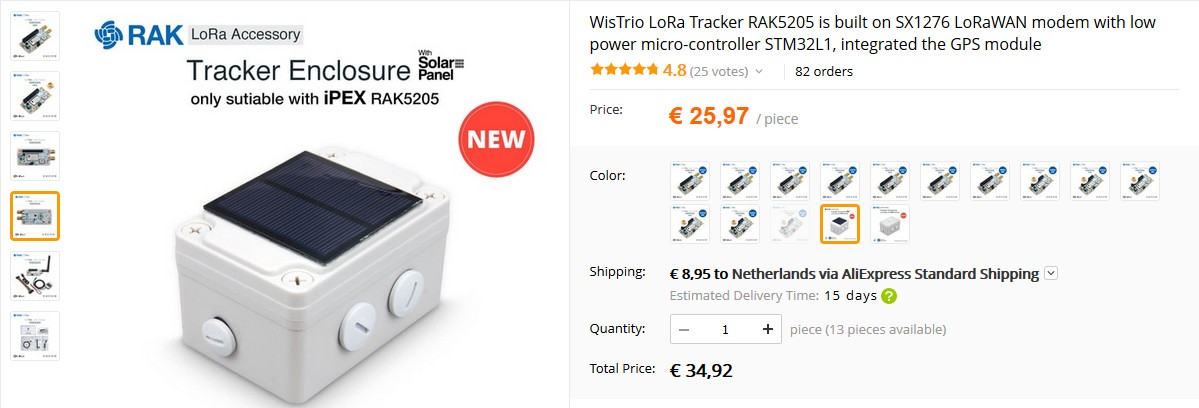Are you able to get the GPS coordinates?
Yes, once the antenna was connected and had a decent view of the sky the GPS data started flowing … and also appeared correctly in Cayenne
OTAA Join Start...
OTAA Join Success
latitude: 51.457207, longitude: -0.219332 , altitudeGps: 30
Bat: 3806mv
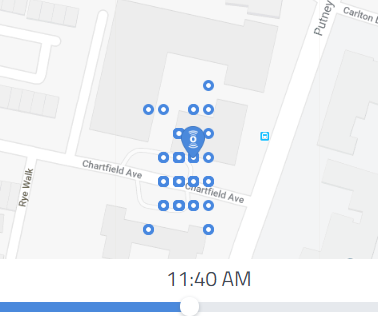
Module works fine, took a while before I could connect it to TTN by means of the at commands.
Can anyone tell me which payload format to use in TTN? I don’t get any readable data.
The payload format is cayenne LPP.
The module I received was delivered with firmware version 1.1.6 which use one set of AT command
refer to this post for the applicable AT command:
https://www.thethingsnetwork.org/forum/t/the-rak-811-v-2-0-tracker-module/18052/46?u=kastayou
The latest firmware available on the RAK github is version 2.0.0.2 which use a different set of AT command
I am currently not able to modify, through the AT command, the interval at which the data are sent (bug in the firmware ??). the default interval value does not respect the TTN fair use policy.
Thanks for your answer. I’am using firmware 2.0.0. at the moment.
KR.
Please note that they have released two different firmwares that output v2.0.0.0 on the console.
One of the 2.0.0.0 version has a bug and can only send confirmed messages which will quickly violate the TTN fair use policy
For the other 2.0.0.0 version, I am not sure if by default the node is sending unconfirmed messages or if you need to manually change the parameter
Has anyone been able to compile this from source? I’m using Eclipse, and I’ve made pretty good progress, but I’m still having some issues that look a lot like actual errors in the github source. I’m using the latest available code. Unfortunately, there are no Makefiles, or project files other than Keil. I’m stuck at a compile error where a source file is obviously referencing an undefined symbol. It would appear that the github contents pushed up a few days ago weren’t exactly a working combination. 
Hi
has anybody used RAK5205 device ? just wanted to know what IDE is used for programming, which language and if there are libraries available ?
For the V1 811 Tracker Rak used the CoIDe, but for the RAK5205 its now based on Keil MDK (V5+?)
Manual now at Rev 1.5/Rev 1.6
Code base here
If you are struggling contact fomi @ rak
If you want to get up and running quickly there are demo binaries (for HF & LF Bands here (with STM Flash utility). Put jumper into Boot mode and power up device to access then when flashed change jumper back and re-boot using Uart utility to interact with device per manual to configure and then join TTN 
Good luck 
I really wish Rak would consider anything other than keil, even eclipse. Keil development tools cost an absolute fortune. Rak’s solution seems to have been to put a serial number cracker utility on GitHub.  That very much disappoints me.
That very much disappoints me.
As an alternative, perhaps creating an mbed os board would be a good solution. Even a basic, but workable, gcc makefile setup would be nice. I have not succeeded in compiling the release using gcc due to syntax errors in a module and difficulty in determining command line requirements. I am now pursuing the possibility of getting both devices working with mbed. Mbed appears to contain a viable Lorawan stack and the os supports deep sleeping.
The cracker was supposed to have been removed/hidden…do not use as it is a) against copyright/license and b) virused! (Trojan)  I did let Rak know about (b)
I did let Rak know about (b)
Would agree wrt alternate to Keil - the lite version sadly is limited to (IIRC) 32kB file where as even the basic RAK811 tracket and now the Rak5205 come in around 80-105kB…they are looking at gcc going forward I understand…
hello, Guys, We just launched the enclosure for Wistrio Tracker board, pls see here:https://www.aliexpress.com/store/product/WisTrio-LoRa-Tracker-RAK5205-is-built-on-SX1276-LoRaWAN-modem-with-low-power-micro-controller-STM32L1/2805180_32957226407.html?spm=a2g1y.12024536.productList_1000000702078.pic_0
there are two options for you,one is with solar panel, the other one not.
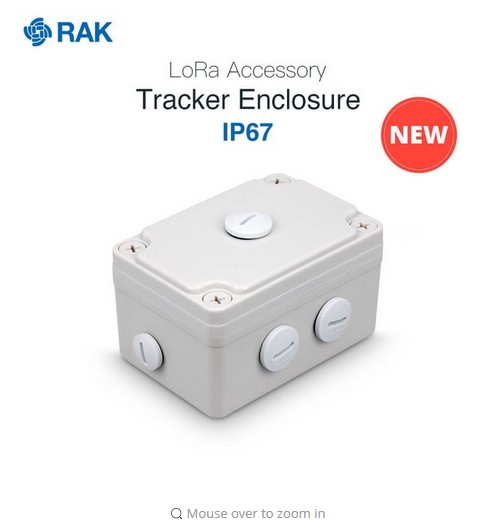
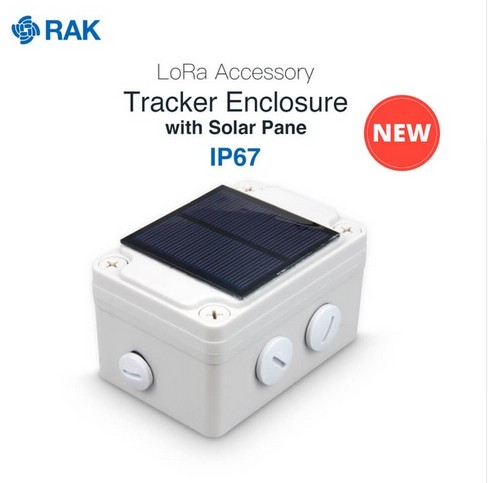
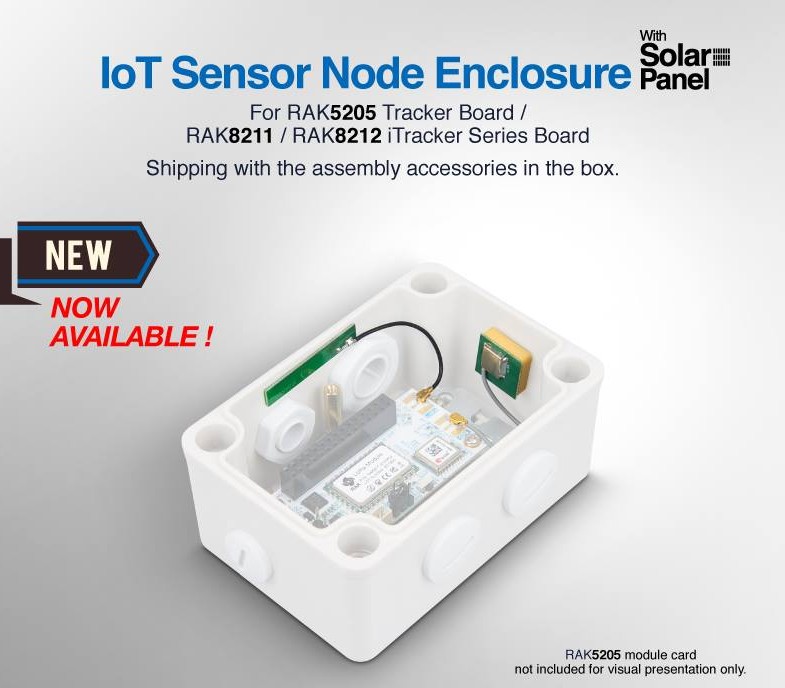
Following the recent posts in the Workbench thread:
Covering the 5205, some strange battery & GPS performance and issues that followed I thought I would update here on how the POC packaging has gone and some basic results:
I tried both the SMA & iPX versions and used in simple scale-able 3D printed housings like these:
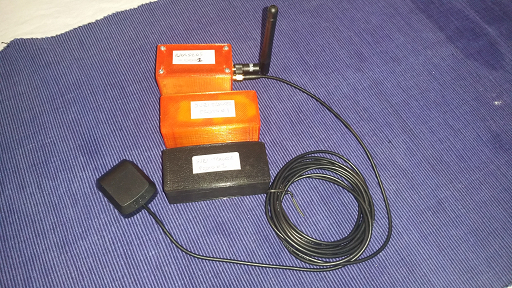
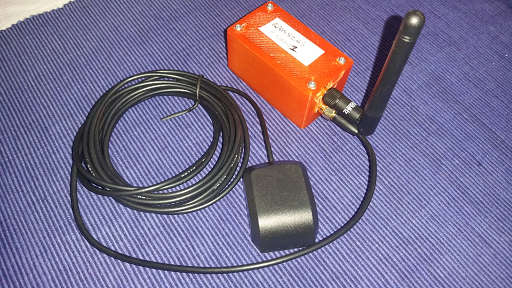
Assembly was simple…LoRa patch antenna and the GPS Lozenge were mounted in the lid
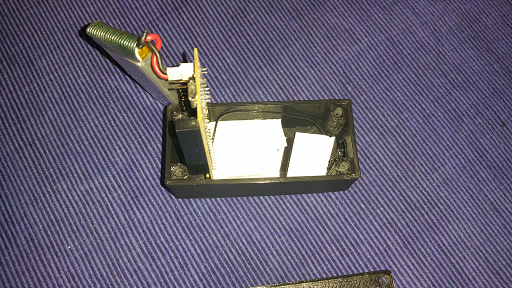
The 5205 board was then the meat in the sandwich:
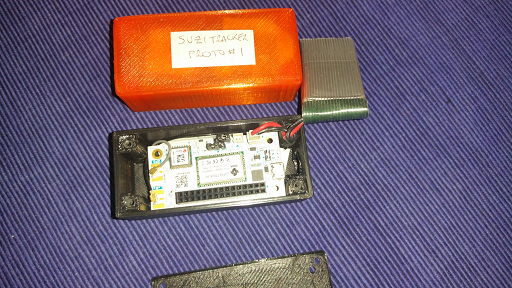
With the Battery as final layer before the the base plate fixed in place with 4xm2.5 screws/bolts.
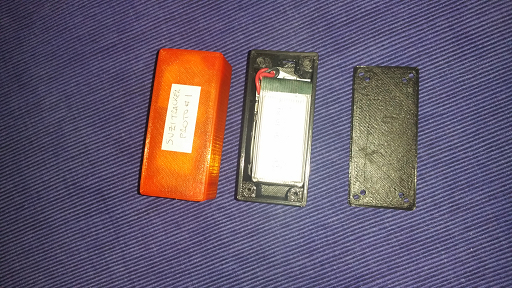
For powering/charging the units before the planned Qi wireless charging solutions arrive either a short usb cable was attached to the onboard socket or a small access hole was cut/melted into the end to allow external usb supply.
As I had a spare earlier V1 811 Tracker/breakboard and had printed a few spare/alternate sized cases I also packaged up one of these
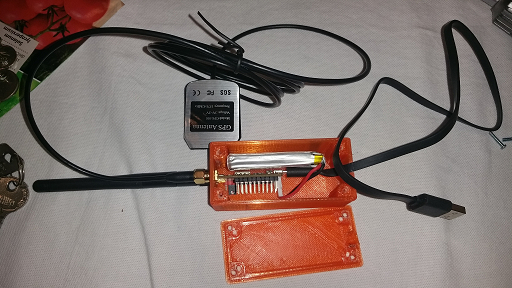
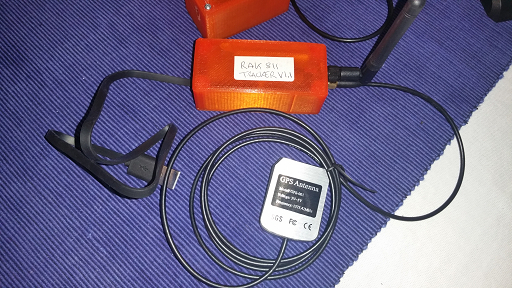
As I wasn’t too sure of what to expect from the small LoRa patch antenna I’ve taken a few drive arounds with the trackers set for 15/30 min position updates. As I was looking for >0.5km range with patch and >2km with the stick ant I was pleased to see examples like these with just the patch:
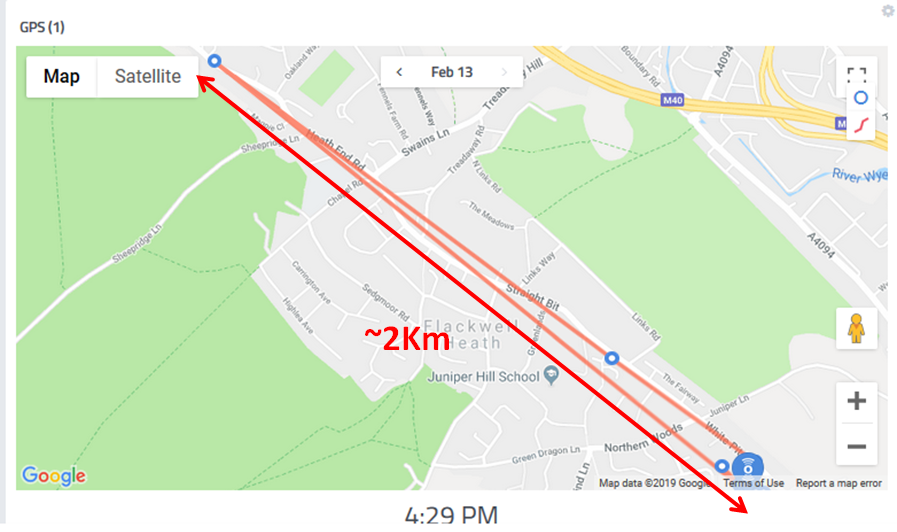
and driving around the Bourne End & Cookham community within range of several GW’s (Flackwell Heath, Cookham & Burnham) I managed to grab this:
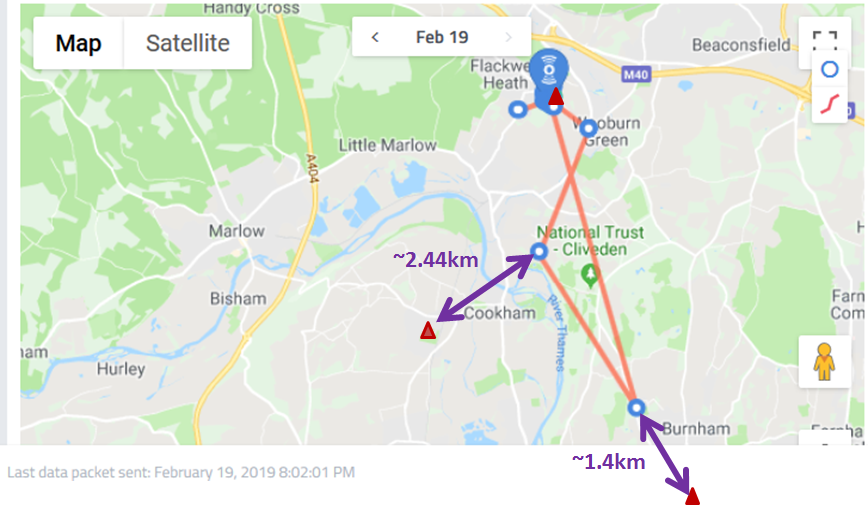
Exceeding expectations without any specific optimisation or refinements.
Well done @rakwireless @fomi @kenyu and the team ![]()
Next steps are to improve overall performance and move to final housings vs these temp 3D simple boxes, develop the software to improve resiliance - at the moment I see a strange behavior where if I let the battery run down too far to point where device drops out and then simply recharge, the unit doesnt restart or rejoin each time and I have to open case and hit reset ![]() I may have to provide a simple external mechanical option for pushing if I cant fix restart.
I may have to provide a simple external mechanical option for pushing if I cant fix restart.
These initial units will be used for POC customer demo (the integrated version - iPX - used for asset and animal tracking/location, and the SMA versions with more effective/flexible GPS and stick ant for plant/vehicle tracking/locating) and as the basis of some planned LoRa/LoRaWAN training for a few local clients ![]()
Also now waiting to see if I can get some examples of the RAK housings flagged by @BoRRoZ above to compare.
if you don’t pay attention a few days The guys from RAK have something new to tell you 

included are the 2 verified antenna’s when you buy the enclosure
Have a look at these antenna test reports
I bought one RAK5205 in the enclosure in the The Thing Conference at Amsterdam. I am testing for couple of weeks. Some impressions:
-
I am not sure if the root cause is the GPS internal antenna, but with box stopped at same place the GPS is showing differents positions with, sometimes more than 200m of diferences between location points
-
At night, after a sunny day, I mean sun enough in the solar panel to charge a LiPo 1100mAh battery, the battery charge don´t support the operations more than 3 hours. In the next day after the sun back to solar panel, the box don´t turn on automatically. What I know about LiPo that they should operate under 3.0V if you want a good battery life.
-
I am using TTN with Cayenne integration and I can´t find the battery charge level information or something related to battery.
I think that RAK is making their products better day-by-day. My suggestion is a better and clear manuals and a better logic distribution of the content in the Github. I am still looking for the payload documentation
See my post wrt the tracker in Workbench thread referenced earlier - I saw same issue wrt GPS - close to window but still indoors - once I placed in large conservatory with wide view of sky or use outside in open areas the GPS behaves as expected.
Had/have same issue wrt battery life (using 1200mA or 800/900mA batteries and only get decent run times when I use preference config after reset to back off both the app update and gps update times…getting days of run-time.
Payload is Cayenne LPP so integration is easy - eventually as the various functions TX their respective payloads - temp/Humidity/GPS/barometric pressure/Accelerometer/battery level you should see dashboard elements gradually populate…the battery level should come through as an analog value - just change the label in settings to battery/charge level  If you are not seeing that come through check if you see it in the TTN console - look at you application data for the device - you should see all the different elements coming though…
If you are not seeing that come through check if you see it in the TTN console - look at you application data for the device - you should see all the different elements coming though…
Jeff,
Your are correct about Cayenne had a Analog value, but I didn´t pay attention that I was battery voltage indication 
I would like to understand better what kind of adjustment that you did about “app update and gps update times”. Could you clarify it for me?
Glad that worked 
Grab the 5205 WisTrio user manual fro the RAK docs site and look to the configuration commands. If you have a serial (via usb port) terminal open then immediately after board reset and self initialisation <messages will appear setting region, initialising teh MEMS devices etc.> you will see message that it is ready to configure preferences…you have a short time then before it starts full operation & join process etc and fixes operating modes during which you can use at commands to set parameters e.g. at_app_interval: etc.  Settings then survive following board resets & cold boots…
Settings then survive following board resets & cold boots…
